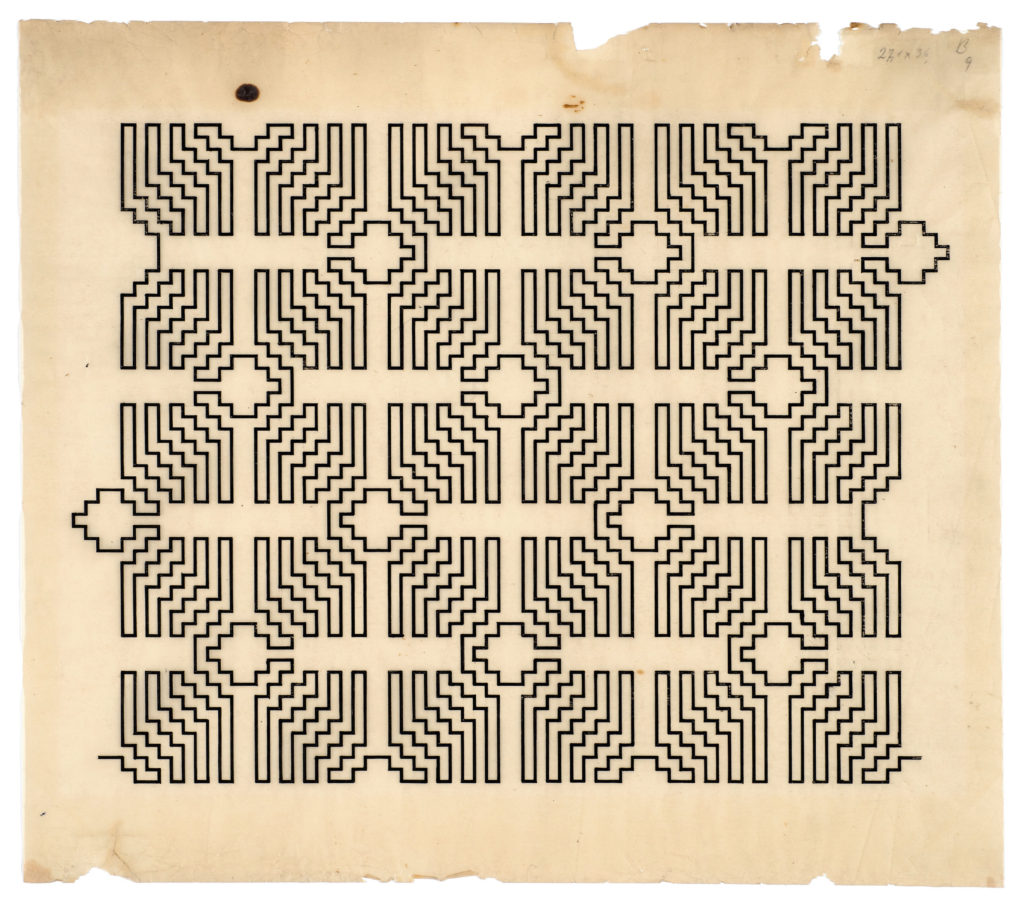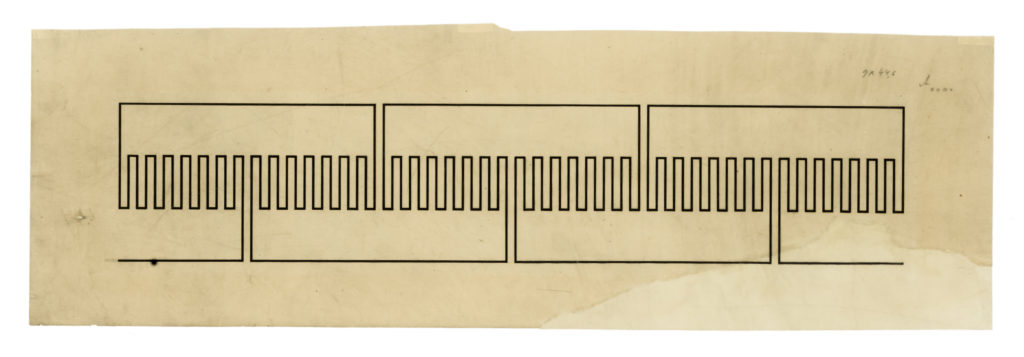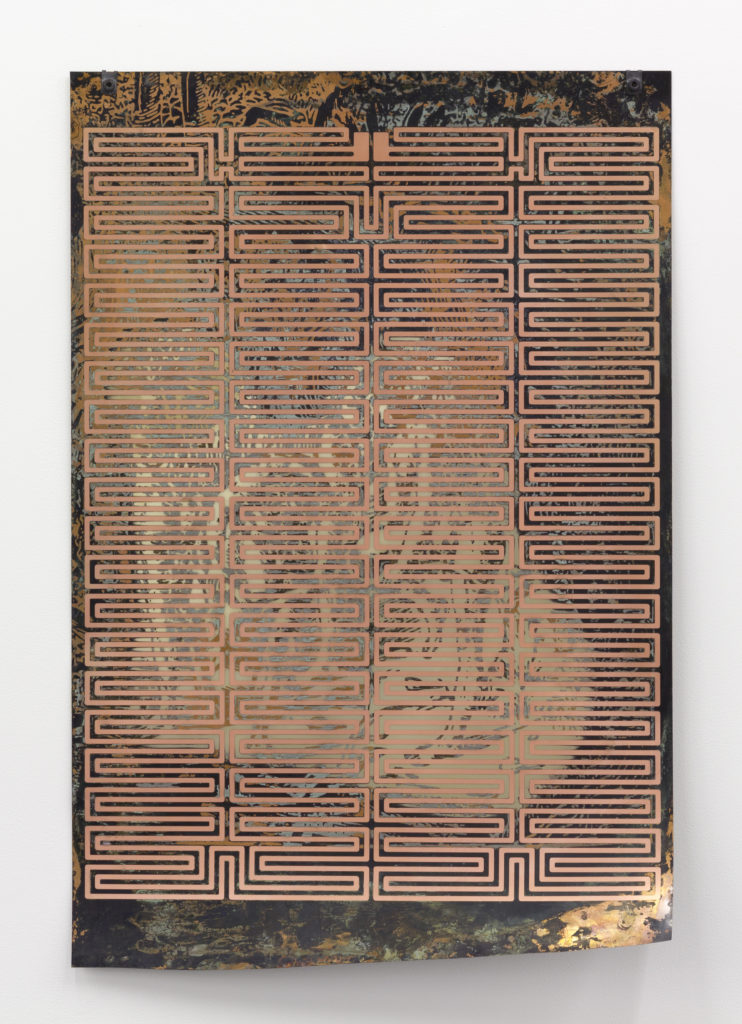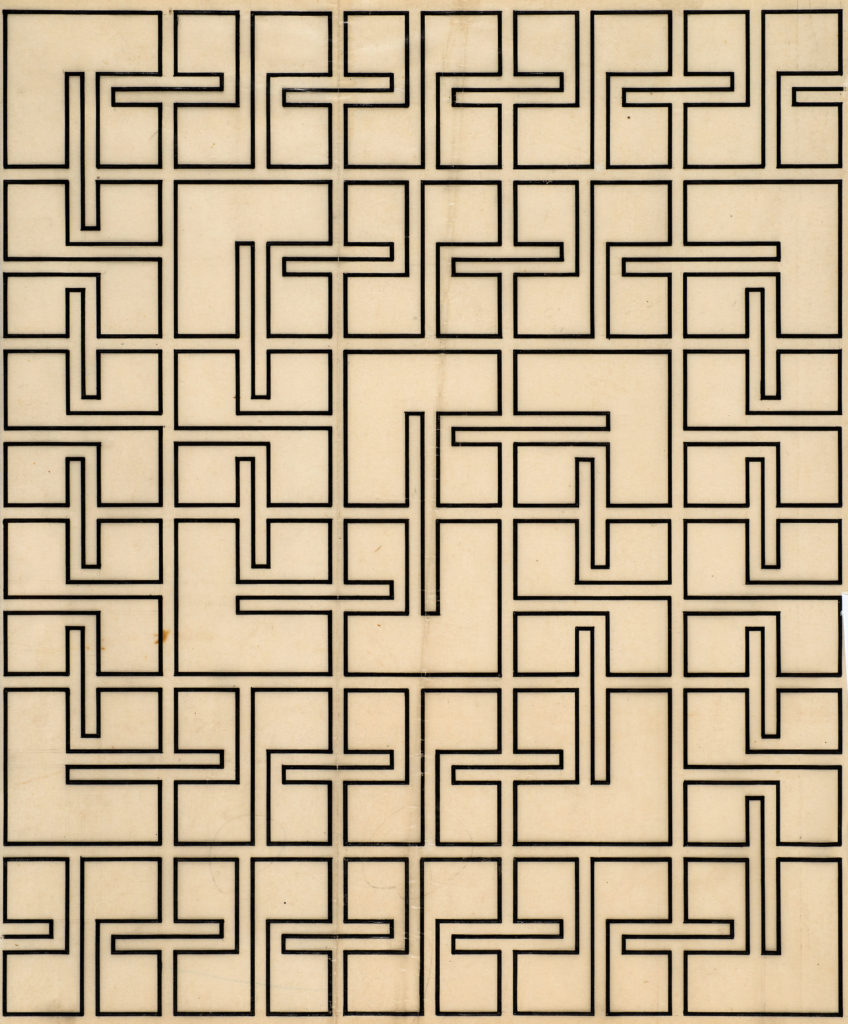Working in isolation, Wacław Szpakowski made mazelike drawings from single, continuous lines.
When he was eighty-five, Wacław Szpakowski wrote a treatise for a lifetime project that no one had known about. Titled “Rhythmical Lines,” it describes a series of labyrinthine geometrical abstractions, each one produced from a single continuous line. He’d begun these drawings around 1900, when he was just seventeen—what started as sketches he then formalized, compiled, and made ever more intricate over the course of his life. His essay is written from the contrived vantage of the third person, betraying an anxiety about his own artistic validity. The drawings, he explains, “were experiments with the straight line conducted not in research laboratories but produced spontaneously at various places and random moments since all that was needed to make them was a piece of paper and a pencil.” Though the kernels of his ideas came from informal notebooks, the imposing virtuosity and opaqueness of Szpakowski’s final drawings are anything but spontaneous or random. His enigmatic process—how he could draw with such supreme evenhandedness, could make his designs so pristine and yet so intricate—is hinted at only in his few visible erasure marks. One drawing reveals two lines bordering the thick final one, a possible clue that Szpakowski may have gone over each design’s path three separate times.
These works did not reach an audience until 1978, five years after Szpakowki’s death; today they’re still obscure and easily misunderstood. They’ve crept into exhibitions over the years, but mostly in the artist’s native Poland—there’s a rare opportunity now at New York’s Miguel Abreu Gallery, currently hosting the largest display of Szpakowski’s work ever mounted in the U.S.
“Grounding Vision: Waclaw Szpakowski” is an experimental show that tests the artist’s endurance, placing twenty-six of Szpakowski’s drawings, along with his original notebooks, alongside work by contemporary artists: a dialectical forum that offers nods, criticism, and counterarguments across a gap of nearly a century. This bold idea is a collaboration between the curators Masha Chlenova, a scholar of early twentieth-century modernism, and Anya Komar, one of the gallery’s directors. Chlenova had made previous scholarly attempts to position Szpakowski among his contemporaries, the pioneers of abstraction, but audiences today may understand the meaning at the heart of Szpakowski’s project better than Rodchenko or Kandinsky ever could. The benefit of seeing art in this post-everything period is that a slew of categories—Abstract? Modernist? Minimalist? Conceptual?—can come together like a poker hand, considered in the palm all at once. When you find out that Szpakowski worked in isolation for three decades, you’re dealt another card: outsider.
But Szpakowski wasn’t at all provincial. A trained architect who worked as an engineer, he played the violin on the side (he later said his drawings could be used as musical scores). His notebooks are like a twentieth-century version of Leonardo da Vinci’s, with enthusiastic scribblings next to observations of architecture and diagrams of natural phenomena, from ocean currents to fir-tree needles. Szpakowski nurtured this intellectual vibrancy through both world wars; in the second he was an active member of the Home Army, for which he was jailed and his son was killed. In his treatise, he attaches great value to his interest in aesthetics amid such political uncertainty, writing,
The very fact of the author’s interest remaining so resolutely focused over the period of many years, the care with which he preserved his sketches through the ravages and challenges of two world wars, suggest that he attached great importance to his pursuits although they might have seemed so trifle in the context of the turbulent historical events that were going on. It is upon the viewer to decide whether the author’s opinion of his linear ideas is justified.
Though this text is aimed at an imaginary future viewer, Szpakowski could never have anticipated the particular tensions of the twenty-first-century gaze: our initial suspicion that the designs, for their perfection, must be computer generated; and, upon discovering that they’re not, our fetishizing his hand-drawing technique. Szpakowski took issue, in his lifetime, with the swallowed-whole way of looking that rendered his designs mere decorations, perhaps drawing on older referents like the ancient Greek meander motif or textile patterns. He insists that “a single glance would not be enough,” and that his were in fact “linear ideas,” with “inner content” accessible only to those who follow the line with their eyes on its journey from left to right: a process not unlike reading.
The show groups Szpakowski’s motifs by his own numbering system; the seven contemporary artists are peppered throughout the sprawling gallery space. Florian Pumhösl already knew of Szpakowski and for this show he made five plaster works in direct response to his drawings. Appearing like models seen aerially, they seem to acknowledge Szpakowski’s architectural training, making a three-dimensional study of the entrance and exit points of Szpakowski’s drawings, turning them into on- and off-ramps rising to a plateau. They emphasize the velocity of Szpakowski’s drawings, the way in which, upon entering, you find yourself on a one-way road without median or rest stop, victim to the hair-raising sharpness of his turns.
Sam Lewitt, Scheme for a Heating Circuit (Birds), 2016, etching on copper-clad plastic, asphaltum, blind assembly nuts, 35 5/8″ x 23 3/4″.
On a monitor in the second room, a three-minute film by Guy de Cointet captures the slow movement of a line across a bold abstract form. It’s only upon reading the title Untitled (7), that you realize this is a cropped and rotated clock, the titular seven intersected slowly by a rotating second hand. On the back of the opposite wall, a Hanne Darboven installation marks the days of a year idiosyncratically. Both works hearken to Szpakowski’s systematization and its “inner content”: the ways in which we bind infinity in legibility, dooming any description to a fragment.
Sam Lewitt’s works are strikingly close to Szpakowski’s, but only formally. Lewitt’s curving lines reference and function as blown-up models of heating systems used in telecommunication technology. Though both artists are interested in the efficiency of form as it may relate to invisible forces, Lewitt’s work takes a critical distance typical of contemporary work that renders Szpakowski’s inventiveness quaint.
Though some of the pairings propose challenges and emphasize the gulf between our time and Szpakowskis, the tautness of his project has a perserverence to it. This show is admirable in allowing him out of the realm of curiosity and into the ring. Reflecting on what might resonate in Szpakowski’s work, Chlenova said that perhaps it’s “the ultimate nerdiness of Szpakowski, how in a very isolated way he was insisting that he discovered something no one else ever thought of.” She paused, “It’s not naïve in a negative way. It’s a sense of freedom, and I think that kind of freedom is important for artists to be able to create.”
Sarah Cowan is a freelance writer and a video editor at the Metropolitan Museum of Art. She lives in Brooklyn.















